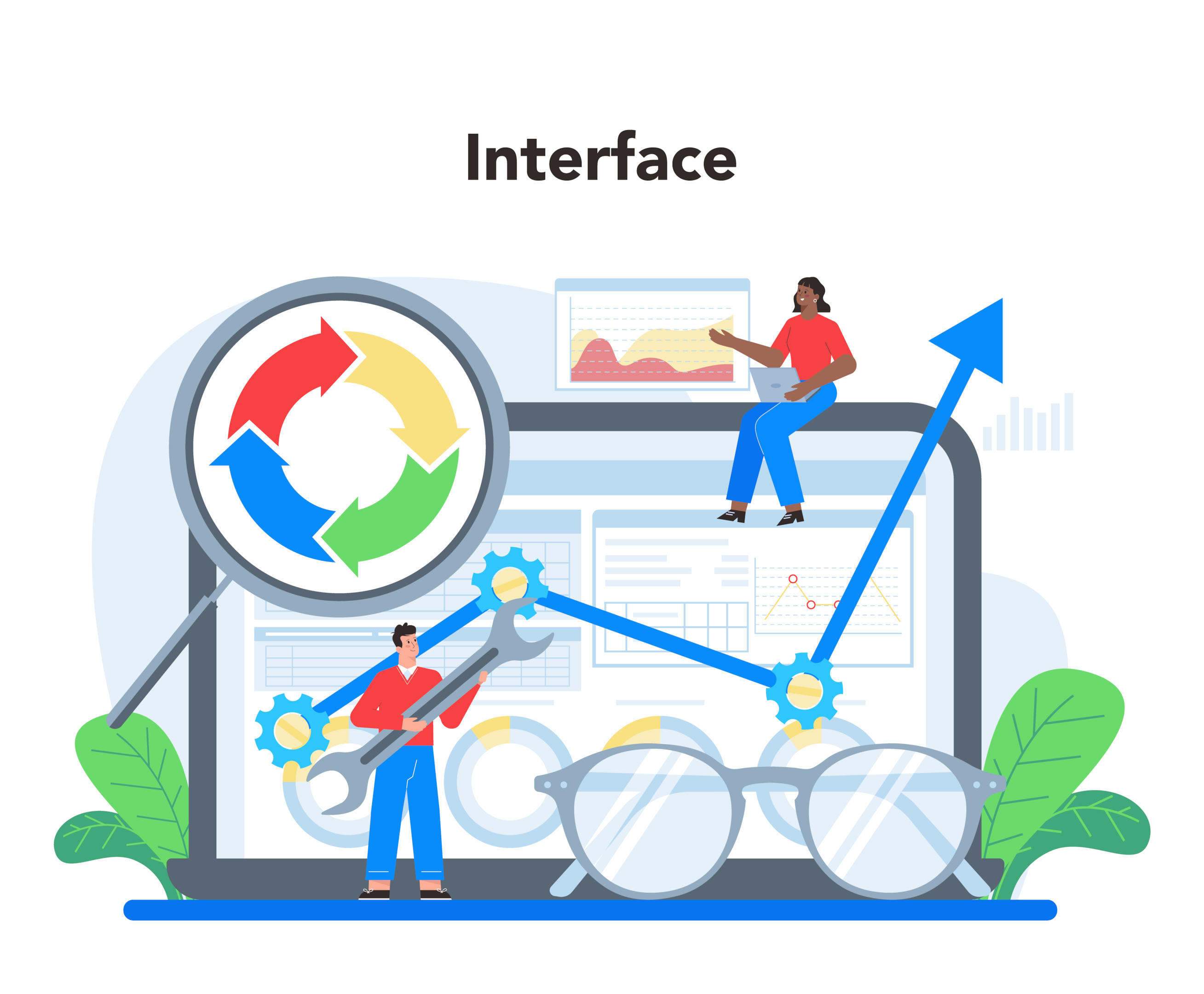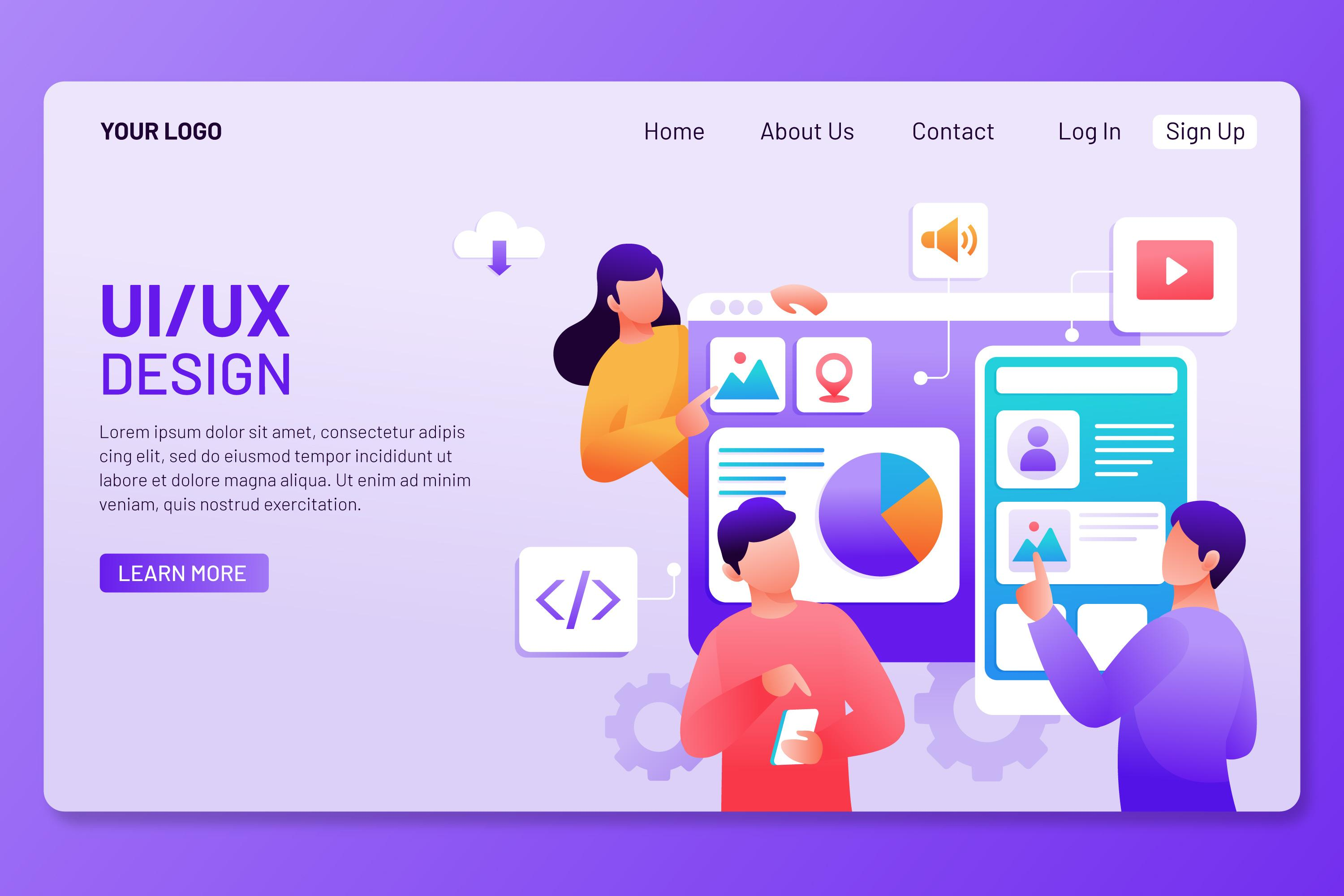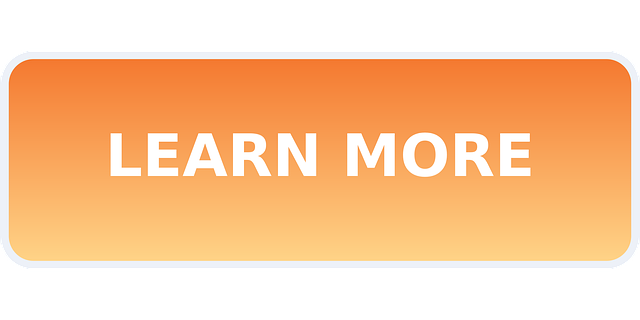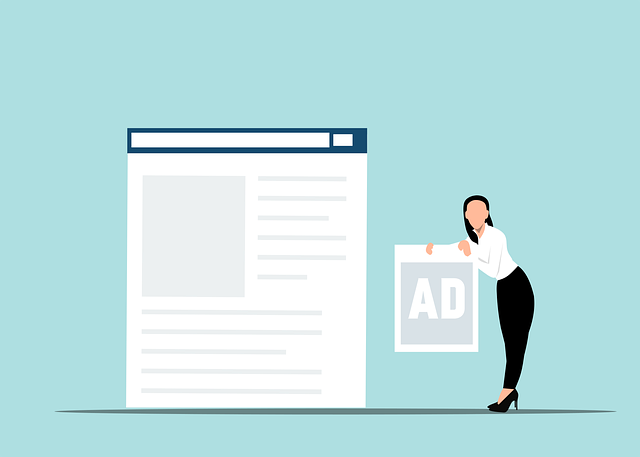We’ll increase conversions by
20-100+%
on your website.
Get a FREE Audit today
See how we can help your business increase conversion rates
The Ultimate Guide To Understanding The Anatomy Of A High-Converting Landing Page

Why Landing Pages Matter For Business Success
In today’s digital-driven world, your online presence can make or break your business. One key factor that determines the success of any online marketing strategy is a high-converting landing page.
Understanding the anatomy of a compelling and effective landing page can significantly increase conversions, drive sales, and boost revenue for businesses across all industries. If you want to create an unstoppable lead-generating machine while providing incredible value to your audience, this ultimate guide on crafting high-converting landing pages is meant for you! So buckle up and dive in to uncover the secrets behind most landing pages and creating a truly captivating web experience for your potential customers.
Landing Page And Their Role In Lead Generation
A landing page is a standalone web page specifically designed for marketing purposes, with the primary objective of transforming visitors into leads or customers. High converting landing pages play an integral part in lead generation by effectively capturing user information and guiding them through the conversion funnel.
The role of a lead generation-focused landing page is to provide users with valuable resources, such as ebooks or webinar registrations, in exchange for their contact information. By delivering personalized content based on potential customer’s interests, businesses can witness increased conversion rates on their own landing page examples other pages. The anatomy of a high-converting landing page consists of essential elements like persuasive copywriting and compelling calls-to-action that work together to maximize conversions.
In today’s online business landscape, creating successful landing pages is paramount for achieving digital marketing goals, whether it be driving profitable actions from paid ads or increasing email subscriber lists. To truly understand the power behind the perfect landing page design, one must dive deep into its specific components and adapt strategies according to target audience preferences and industry trends.
The Anatomy Of A High-Converting Landing Page

Discover the essential elements of a high-converting landing page, from attention-grabbing headlines to effective calls-to-action, and learn how to optimize your own landing pages, for maximum conversion rates. Keep reading to find out more about crafting landing pages that turn visitors into valuable leads.
Crafting An Attention-Grabbing Headline
Crafting an attention-grabbing headline is a crucial component of creating a high-converting landing page. An effective headline immediately captures the interest of your visitors, compels them to stay on the page, and guides their journey through your enticing value proposition. According to Unbounce’s illustrated landing page example, breaking down the message into different parts of the landing page ensures that potential customers are engaged from start to finish.
A great landing page headline should be clear, concise, and directly speak to the intended audience’s needs or pain points. To craft such a powerful statement, focus on emphasizing benefits rather than features; highlight what sets you apart from competitors; and keep it short yet impactful. By carefully crafting your entire landing page with an attention-grabbing headline in mind, you increase your chances of guiding visitors towards converting into leads or customers.
Remember that first impressions matter greatly in online marketing – so investing time and effort into creating the perfect landing page copy can significantly impact your conversion rates. Be sure not only to test your various landing pages headlines but also analyze their performance regularly for continuous optimization. In doing so, you’ll ensure long-term success with highly engaging and high-converting landing pages tailored specifically for your target audience’s interests and needs.
Establishing A Clear And Compelling Value Proposition
One of the essential elements of a high-converting landing page is establishing a clear and compelling value proposition. This refers to describing the unique benefit or solution that your offering provides to potential customers. By outlining this in simple, persuasive terms, you can effectively communicate why someone should choose your product or service over competitors.
To create an effective value proposition, it’s important to understand your target audience’s pain points and what they are looking for in a solution. Once you have identified this information, craft language that is concise yet powerful and speaks directly to their needs. By doing so, visitors will quickly understand how your offering solves their problems and be more likely to become leads or customers.
Writing Persuasive And Convincing Copy
Writing persuasive and convincing copy is a crucial element in creating a high-converting landing page. Your goal is to persuade your audience that they need your product or service, and you have the solution to their problems. Use emotional triggers that appeal to their needs, emphasize benefits instead of features, create a sense of urgency and highlight social proof. These elements help build trust with potential customers.
Incorporate bullet points into the copy for better readability, use clear language that resonates with the intended audience and avoid jargon. Be a brief description but specific about what makes your product or service unique compared to others in the market. A powerful call-to-action (CTA) will ultimately convert visitors into leads, so make sure it stands out on the page and use language that encourages action from readers such as “Try now” or “Sign up today”.
Incorporating Engaging Visuals
Visuals play a crucial role in catching the reader’s attention and holding it for longer on a landing page. Incorporating engaging visuals is an essential part of the anatomy of a high-converting landing page. Stock photos can be used, but personalized images are even more effective at building trust and creating credibility with potential customers.
Images should complement and support the text, emphasizing important points to persuade visitors to take action ultimately. Using bullet points or infographics instead of paragraphs can help break up text-heavy sections while conveying valuable information visually. Remember that balance is key; too many images can be overwhelming and detract from the overall message, so always keep your intended audience in mind when deciding what visuals to include on your landing page.
Building Trust Through Social Proof
Building trust through social proof is a crucial element in creating an effective high-converting landing page. Social proof can take many forms, such as customer testimonials, product reviews or ratings, and endorsements from influencers or industry experts. Incorporating these elements on your landing page provides potential customers with valuable information about the quality of your products or services and helps to increase their confidence in buying from you.
Additionally, using social proof can help to create a sense of community around your brand and foster trust between you and your target audience. When visitors see that others have had positive experiences with your business, they are more likely to take action themselves. By showcasing social proof effectively on your landing page, you can significantly boost conversion rates and ultimately drive more sales for your business.
Creating An Effective Call-to-Action
A call-to-action (CTA) is a crucial element of any effective landing page, as it guides the visitor towards the conversion goal. The CTA should be prominently displayed above the fold and use clear, action-oriented language to encourage visitors to take action. It is important to align the language of your CTA with what you promised in your value proposition so that there’s no disconnect between what people expect and what they receive.
To create an effective CTA, consider using contrasting colors that stand out from the rest of the page and making it large enough so that it catches visitors’ attention immediately. You can also test different variations of your CTA copy and design to see which one generates more conversions. A good practice is to keep testing until you find a combination that works best for your target audience.
Optimizing Lead Capture Forms To Maximize Conversions
The lead capture form is one of the most crucial elements in a high-converting landing page. It provides an opportunity to collect visitors’ contact information, allowing businesses to follow up and nurture leads into sales. To maximize conversion rates, optimize your lead capture forms by keeping them as short and simple as possible. Avoid asking for too much information upfront, and stick to the essential fields such as name and email address.
Another way to optimize lead capture forms is by providing a clear value proposition or incentive that encourages visitors to take action. Offering something exclusive like a free trial or e-book can increase the likelihood of visitors filling out the form. Additionally, test different variations of your form’s call-to-action (CTA) button text, colors, placement, and design regularly to determine what works best for your target audience. Remember that even small changes can significantly impact your conversion rates over time.
Best Practices For Creating A High Converting Landing Pages

To increase your chances of creating a high-converting landing page, it is important to define your goals and target audience, keep it simple and optimized for mobile devices, test regularly, and implement effective copywriting techniques – read on to discover more!
Defining Goals And Identifying Target Audiences
To create a high-converting landing page, it’s important to start with clear goals and a deep understanding of your target audience. Defining your goals will allow you to identify the most-wanted action (MWA) for your landing page. This could be anything from signing up for a newsletter to purchasing a product.
With the MWA defined, you can then focus on crafting copy and design that speaks directly to your target audience. Market research is crucial in gathering information about your ideal customer’s demographics, needs, pain points, and desires. This knowledge will guide you in creating value through an offer or solution that resonates with them and ultimately converts visitors into customers.
Keeping It Simple And Focused
When creating a landing page, it’s essential to keep things simple and focused. Cluttered long form landing pages can be overwhelming for visitors, leading them to bounce before converting. To prevent this from happening, aim for a clean design with plenty of negative space.
Another way to simplify your landing page is by keeping the copy concise and easy to read. Use bullet points instead of lengthy paragraphs to help visitors digest important information quickly. By simplifying your landing page, you’ll make it easier for potential customers to understand your offering and take action.
Keywords used: high-converting landing page, good landing pages, page, focus, simplicity, cluttered pages, clean design,negative space,bullet points,easy-to-read,copy
Optimizing For Mobile Devices
Mobile optimization is a crucial and important element of creating high-converting landing pages. With over 50% of Internet traffic coming from mobile devices, it’s essential to ensure that your landing page is easy to navigate on any device. To optimize for mobile, keep the design simple and straightforward while ensuring it loads quickly.
Another critical factor in optimizing for mobile devices is having responsive design elements that adapt to various screen sizes seamlessly. This adaptation ensures the user has an optimal experience regardless of what type of device they use to access your site. Implementing these best practices will help you create a high-converting landing page that appeals to all potential customers, whether they’re using desktops or smartphones.
Testing And Analyzing Landing Pages Regularly
Testing and analyzing landing pages regularly is crucial to ensure that they are optimized for maximum conversions. By monitoring the performance of your landing pages, you can identify problem areas and make necessary adjustments. Tools such as Google Analytics can provide valuable insights into user behavior, including bounce rate and time on one landing page, which can help you fine-tune your messaging and design.
It is important to test various elements of your landing page such as headlines, images, copy, forms, and calls-to-action in order to determine what works best for your target audience. A/B testing allows you to compare two versions of a landing page against each other and analyze which one performs better. This data-driven approach helps eliminate guesswork from the process and ensures that you are making informed decisions based on actual results rather than assumptions.
Tips For Writing Copy That Converts

To create copy that converts, use emotional triggers to persuade, emphasize benefits instead of features, create a sense of urgency, and highlight social proof.
Using Emotional Triggers To Persuade
Emotional triggers are powerful tools that can be used to persuade customers and increase conversions on landing pages. Research has shown that people make decisions based on emotions, which means that businesses must understand how to tap into those emotions effectively. Pain is a universal emotional trigger that can be used to highlight the benefits of a product or service and persuade customers to take action.
In addition to the pain point, there are other emotional triggers that businesses can use in their marketing copy. These include fear, greed, love, and curiosity. By tapping into these emotions through persuasive language and visual cues like images or videos, businesses can create a sense of urgency and excitement around their products or services. Ultimately, this helps drive visitors’ attention towards the call-to-action button and ultimately converts visitors into leads or sales.
Emphasizing Benefits Instead Of Features
When it comes to writing copy for a landing page, many businesses make the mistake of focusing too much on the features of their product or service. Instead, it’s important to emphasize the benefits that customers will gain from using your offering. Benefits provide a clear understanding of what problem your solution solves and how it improves their lives.
Benefits can also tap into customer emotions and create a sense of desire for your product or service by highlighting how it can make them feel happier, healthier or more successful. For example, instead of just listing the technical specifications of a new laptop, focus on how its lightweight design will allow customers to easily work from anywhere without feeling weighed down. By highlighting benefits over features in your copywriting, you’ll be able to resonate with potential customers and drive conversions on your landing page.
Creating A Sense Of Urgency
Creating a sense of urgency is an effective tactic for driving conversions on landing pages. By giving potential customers a reason to act quickly, you can increase the chances they will take the desired action. One way to do this is by using time-limited offers or promotions that expire within a certain timeframe.
Another way to create urgency on your landing page is by emphasizing scarcity. This could be highlighting limited availability of products, services, or appointments. Scarcity creates FOMO (fear of missing out) and motivates visitors to act before it’s too late. Just ensure that when you use urgency on your landing page, it’s genuine and not misleading as this could damage customer trust in the long run.
Highlighting Social Proof
One of the most important elements of a high-converting landing page is social proof. This refers to showcasing testimonials, reviews or endorsements from satisfied customers. Social proof validates your product or service and helps potential customers trust your brand. Incorporating social proof can significantly increase conversions on a landing page.
There are various types of social proof that you can use for your landing pages, such as customer testimonials, influencer endorsements and user-generated content. Including real data and statistics like customer satisfaction ratings or sales figures can also be very effective in building credibility with visitors. By highlighting positive experiences from others who have used your product/service, you encourage potential customers to convert by establishing trust in your brand through these powerful third-party endorsements.
Common Mistakes To Avoid
Avoid overloading your landing page with information, having an unclear or weak call-to-action, inconsistent messaging, neglecting design elements and not incorporating social proof. Read on to learn more about more effective landing pages, page design and optimization for higher conversion rates.
Overloading Your Landing Page With Information
One of the most common mistakes that businesses make when designing a landing page is overloading it with information. This can include too many images, too much text or too many links. When visitors are inundated with content, they are less likely to take action and ultimately convert into customers.
To avoid this mistake, it’s important to keep your landing page simple and focused on one main goal or message. Use bullet points and short paragraphs to break up big blocks of texts, and only use visuals that directly support your message. Remember: less is often more when it comes to creating an effective landing page.
In fact, studies show that a clutter-free design with plenty of negative space can be highly effective in driving visitors’ attention towards the most important elements on the page. By keeping things simple and easy-to-understand, you’ll increase your chances of converting visitors into loyal customers who come back time after time.
Unclear Or Weak Call-to-Action

An unclear or weak call-to-action (CTA) is one of the common mistakes that can hinder conversions on your landing pages. Your CTA should be prominent and compelling, motivating visitors to take immediate action. It’s essential to use actionable language that inspires readers to click through and engage with your offer.
Your CTA copy should also be specific and relevant, reflecting what visitors will get when they complete the form or take a particular action. By giving clear instructions on what you want visitors to do next, you make it easier for them to convert into leads. Remember always to test out different CTAs continually; doing so could help you find the most effective wording that ultimately converts visitors into loyal customers.
Inconsistent Messaging
One of the common mistakes to avoid when designing a high-converting landing page is inconsistent messaging. This means that the messaging on your landing page should be consistent with what was advertised or promised in the email or ad that directed visitors to your landing page. Confusing messaging can lead to a high bounce rate and a low conversion rate.
To ensure consistent messaging, make sure that the copy on your landing page reflects the same language and tone as used in the ad or email campaign. Use similar keywords and phrases so it’s clear that visitors have landed on the right page. An effective way to do this is by using A/B testing to see which messages resonate best with your target audience before settling on one final message.
Neglecting Design Elements
Neglecting design elements can significantly impact the effectiveness of your landing page. A poorly designed landing page can turn off potential customers and decrease conversion rates. It is essential to incorporate visual elements such as hero images, negative space, and bullet points to drive visitors’ attention and create a visually appealing experience.
Moreover, the use of stock photos without customization or relevance to your offer can appear unprofessional and negatively affect credibility in the eyes of potential customers. Design must work hand-in-hand with copywriting to create an effective landing page that ultimately converts visitors into leads. By integrating these crucial design elements into your best landing page designs and layout, you increase the chances of achieving more conversions for your business.
Conclusion: How To Design And Optimize Your Landing Pages For Higher Conversion Rates

In conclusion, creating a high-converting landing page is not rocket science, but it does require attention to detail and an understanding of your audience’s needs. By following these landing page best practices, and incorporating persuasive copy, engaging visuals, and social proof, you can create a landing page that converts visitors into customers.
Remember to keep things simple, test regularly, and optimize good landing page for mobile devices to maximize your results. With these tips in mind and a little bit of creativity, you’ll be well on your way to designing the perfect landing page that ultimately converts visitors into loyal customers.
General FactS
1. The article is a guide to understanding the anatomy of a high-converting landing page.
2. It provides tips and rules for creating landing pages and building successful landing pages.
3. The article emphasizes the importance of identifying your target audience.
4. A high-converting landing page should have a single conversion goal.
5. The article suggests using time limits on special offers to create urgency.
6. Captivating headlines and imagery are key elements of a high-converting landing page.
7. Social proof and benefits of the offering should be included on the landing page.
8. The article highlights the significance of a unique selling proposition (USP).
9. Psychological trust and first impressions play such a way crucial role in increasing conversions.
10. A good landing. The article provides a 5-step process for designing the perfect landing page.








